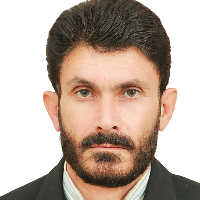Scaling Brooks-Corey Soil Water Retention Curve Using Minimum Data
Measuring the soil water retention curve in the laboratory is time consuming and costly. For this purpose, researchers have developed some methods to reduce measurements. One of these methods is scaling. The objective of this study is to scaling the soil moisture retention curve using Brooks-Corey model for all textural classes. This method requires a reference curve and the moisture content in a specified suction. In this method the scaling factor is the logarithm of water content in a specified suction (e.g.) in the reference soil to the logarithm of water content in the same suction of the proposed soil. The scaling factor obtained by the proposed method was evaluated with the scaling factor obtained by the statistical optimization method. In this study, 11 different soil texture classes data provided by Rawls et al. were used. The results showed that the scaling factor obtained based on the water content of , and is close to the optimum scaling factor. The mean value of the sum of squares error for the proposed and optimization methods were 0.047 and 0.045, respectively. The mean value of the geometric mean error for the proposed and optimization methods were 1.024 and 1.047, respectively. The results showed that the reference curve is optional and each soil can be used as the reference curve. In the case of De-scaling, the soil water retention curve obtained by the proposed method was fitted very well to the one obtained from Brooks-Corey model.
-
مدیریت سیلاب و سامانه مونسون در استان سیستان و بلوچستان
*، محمدمهدی چاری، هادی گلوی
نشریه مطالعات محیط زیست، منابع طبیعی و توسعه پایدار، تابستان 1403 -
تاثیر رودخانه مرزی هیرمند بر شرایط آبی و مسائل زیست محیطی منطقه سیستان
*، محمدمهدی چاری
نشریه مطالعات محیط زیست، منابع طبیعی و توسعه پایدار، زمستان 1400



